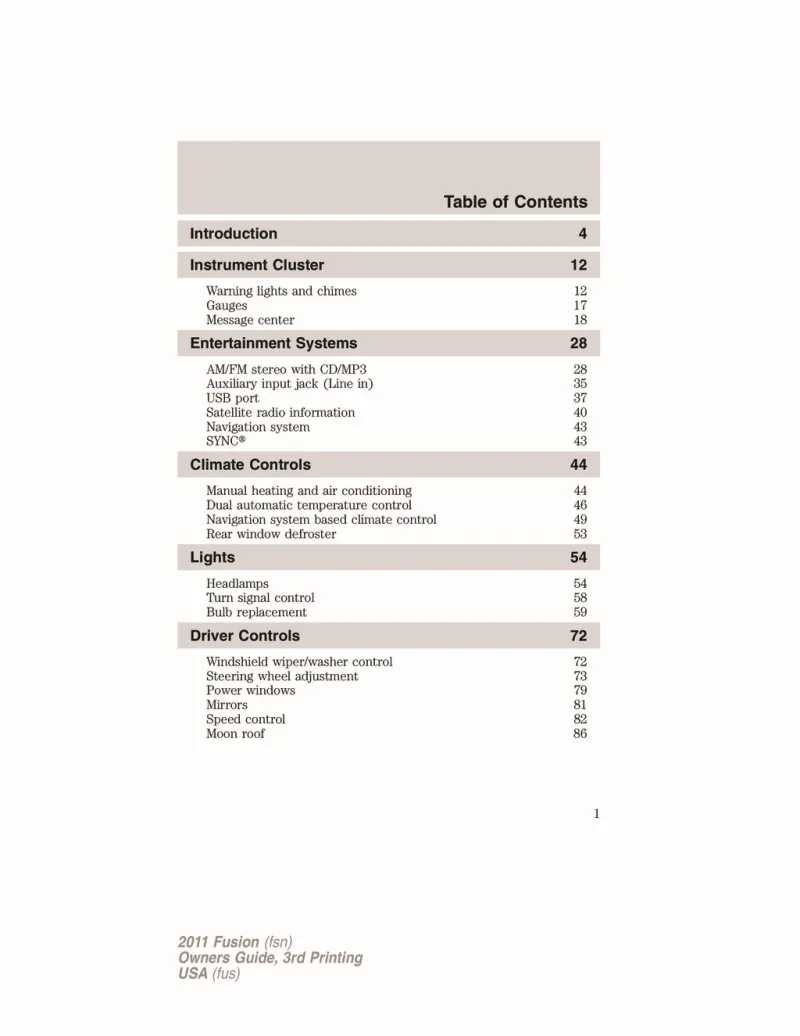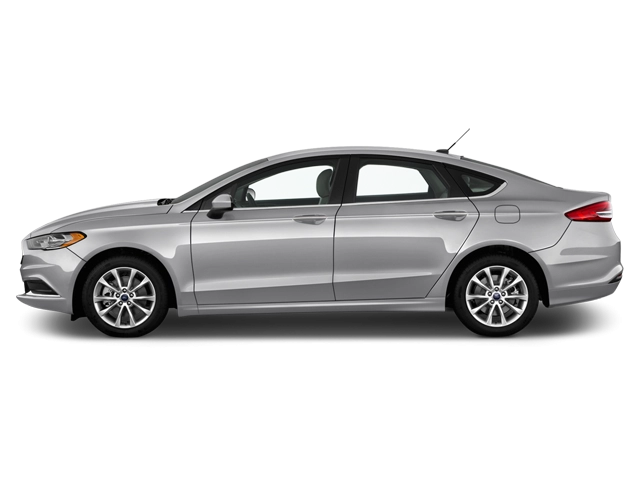2011 Ford Fusion Owner's Manual

Table of Contents
2011 Ford Fusion Overview
Introduction
The 2011 Ford Fusion is a midsize sedan that beautifully merges style, performance, and technology, making it an appealing choice for a diverse range of drivers. With a sleek design and a spacious, comfortable interior, the Fusion not only captures attention on the road but also offers practicality and a quality driving experience. As part of Ford's commitment to innovation, the 2011 model year brings improvements in fuel efficiency and advanced features, solidifying its standing in a competitive market.
Powertrains
The 2011 Ford Fusion offers a variety of powertrain options to meet different driver needs. The base engine is a 2.5-liter inline-four that produces 175 horsepower, delivering a satisfying balance of performance and economy. For those seeking more power, a 3.0-liter V6 variant is available, providing 240 horsepower. Additionally, a 2.5-liter four-cylinder engine with hybrid technology is offered, allowing for exceptional fuel efficiency without sacrificing performance. Each engine is paired with either a smooth six-speed manual or an automatic transmission, ensuring responsive handling and a pleasant driving experience.
Trims
The 2011 Fusion is available in several trims: the base S, mid-level SE, and the upscale SEL, leading to the sport-oriented Fusion Sport. Each trim level is designed to cater to different preferences and lifestyles, with enhanced features added as you move up the lineup. The more premium trims come with amenities such as leather upholstery, upgraded audio systems, and advanced safety features, allowing customization to suit individual tastes.
Features
This model is outfitted with a range of modern features for both comfort and convenience. Standard offerings include keyless entry, a six-speaker sound system, and full power accessories. Higher trims add dual-zone automatic climate control, satellite radio, navigation, and a premium sound system. Safety features like antilock brakes, stability control, and optional rear parking sensors enhance driver confidence on the road.
Owners Manual
The 2011 Ford Fusion comes with a comprehensive owner's manual that provides invaluable information on vehicle maintenance, operating systems, and troubleshooting. This guide ensures that owners can maximize their driving experience by understanding the intricate details of their Fusion, from routine servicing tips to safety features. With the owner's manual in hand, drivers can stay informed and get the most out of their vehicle for years to come.
User manual download
The Ford Fusion owner manual for the 2011 model year is to be found in PDF downloadable format on this page. The owner manual for the model year 2011 is free and in English, but the repair manuals are usually not easy to get and may cost more.
Manual Questions
Fill the form below and someone will help you!

